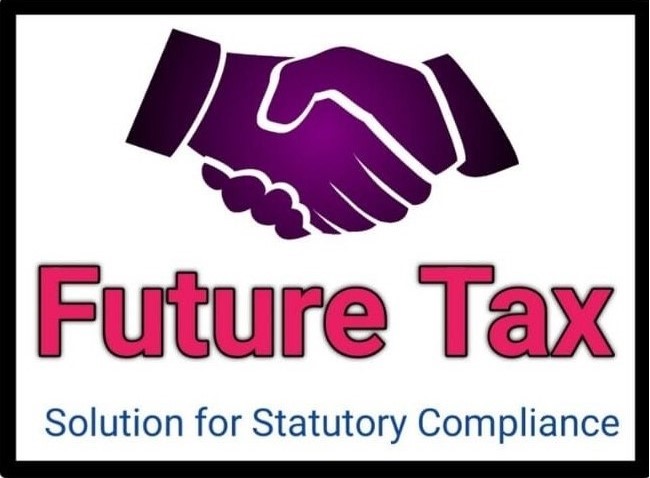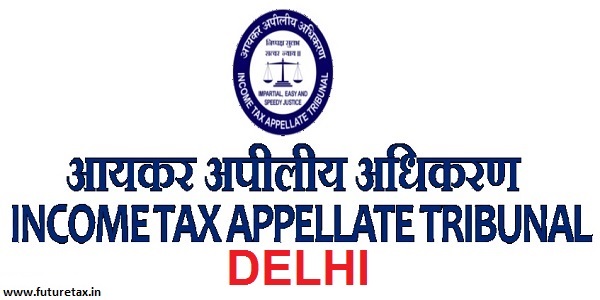
Fraud Indicators in PSU and Government Contracts Audit in Tamil
- Tamil Tax upate News
- January 14, 2025
- No Comment
- 107
- 19 minutes read
Fraud Indicators related with Purchase and Construction Contracts Mechanism during Audit of PSU and Government Department
Billing Fraud: Person causes employer to issue payment by submitting invoices for fictitious goods or services, inflated invoices, or invoices for personal purchases.
Fraud indicators relating to billing fraud include, but are not limited, to:
Bill submitted with unknown names or of a shell company and bills employer for services not actually rendered. Employee purchases personal items repeatedly and submits invoice to employer for payment. Unclear reasons for particular supplies or few details concerning service provided. Suppliers not generally known to staff, not handled in normal way, or dealt with exclusively by a director or manager. Suppliers with post office box addresses, residential addresses or the same address as another supplier, or the same address as an employee or relative. Invoices which are soiled, incomplete (i.e. no phone number), on odd sized paper or altered in some way. Unfolded invoices may indicate that they have not been mailed. Invoices from various suppliers on similar stationary. Large number of invoices for a particular supplier just beneath approval thresholds. Numerous entries or other adjustments on purchase ledger. Numerous entries in suspense accounts during the year. Supplier doesn’t offer usual discounts or terms. Recurring identical amounts from same vendor that is not under contract. Multiple remittance addresses for the same vendor. Payments to a vendor increase dramatically for no apparent reason. Duties are not segregated between processing of invoices and updates to vendor master files, between check preparation and posting to vendor account, and between check preparation and mailing of signed checks. No proper documentation of additions, changes, or deletions to vendor master file. Excessive credit adjustments to a particular vendor and/or credit issued by unauthorized department. False email payment request combined with a hard copy printout with forged approval signatures. Employee takes advantage of the lag time which typically occurs during book closing to get false invoices approved and paid. Recording of false credits, rebates or refunds to customers. Pay and return schemes (occur when an employee creates an overpayment to a supplier and pockets the subsequent refund).
Bribery: Occurs when a Government employee or contractor accepts something of value in exchange for preferential treatment. An example of bribery is if money is accepted in exchange for the awarding of a contract.
Kickback: An amount of money that is given to someone in return for providing help in a secret and dishonest business deal.
Fraud indicators related to bribery and kickbacks include, but are not limited to:
Overly friendly interaction between Government employee and contractor. Unexplained increase in wealth of Government employee. Government official’s acceptance of inappropriate gifts or entertainment. Government official has an undisclosed outside business. Quality Assurance Representative/Inspector progress reports do not match contractor invoices. Inadequate documentation of contract violations by contracting personnel. Supplier has reputation in the industry for paying kickbacks. Unnecessary middleman or broker involved in contracts or purchases. Requests for sole source procurements when there is an available pool of vendors to compete the contract. Questionable, undocumented or frequent requests for change orders awarded to particular contractor. Industry or country has a reputation for corruption. Unexplained or unjustified favorable treatment of a particular supplier. Questionable, improper (noncompetitive) or repeated selection of a particular supplier. Employee sells company-owned property at less than market value to receive a kickback or to sell the property back to the company at a higher price in the future. Lengthy, unexplained delay between the announcement of winning bidder and signing of the contract (may indicate contractor refuses to pay or is negotiating bribe demands). Payment of unjustified high prices, purchase of unnecessary or inappropriate goods/services, or continued acceptance of late delivery, high-priced, low-quality work. Unusually high volume of purchases. Vendor address, telephone number, or zip code matches employee’s address, outside business, or relative. Vendor address is incomplete. Vendor identification number matches employee’s identification number.
Change Order Abuse: A contractor, in collusion with a procurement official, can submit a low bid to insure winning a contract, and then increase its price and profits by submitting change order requests after the contract is awarded. A dishonest contractor, acting alone or in collusion with contract personnel, can submit unjustified or inflated change order requests to increase profits, or, as the result of corruption, use the change order process to extend a contract that should be re-bid.
Fraud indicators related to change order abuse include, but are not limited to:
Weak internal controls and procedures regarding review or need for change orders. Numerous, unusual or unexplained change orders for a specific contractor approved by the same employee. Pattern of low bid award followed by change orders that increase the price or scope of the contract, or extend the contract period. Vague contract specifications followed by change orders. Poorly documented change orders, or change order requests in round number amounts, if that is unusual for the job. Pattern of change orders just below upper level approval limit. High-level Government personnel involved in change order decisions, especially for specific contractors. Purchase orders of contracts extended by change order rather then re-bidding of contract.
Check Tampering: Employer’s funds are stolen by intercepting, forging or altering a check drawn on one of the organizations bank accounts.
Fraud indicators relating to check tampering include, but are not limited, to:
Forging an authorized signature on a company check. Forging the payees’ signature. Altering the payee on the check. Employee steals blank company checks, makes them out to self or an accomplice. Employee steals outgoing check to a vendor, deposits to own bank account or uses to pay own creditors. Duplicating or counterfeiting of company checks. Paying a check to the company knowing that insufficient funds are in the account to cover it.
Collusive Bidding: Collusive Bidding is defined as bidders secretly agreeing to submit complementary high bids to allow preselected contractors to win. Suppliers and contractors agree to prohibit or limit competition and manipulate prices to increase the amount of business available to each participant
Fraud indicators related to collusive bidding include, but are not limited to:
Winning bid is high compared to cost estimates, published price lists, similar jobs, or industry averages. Pattern of rotating winning bidders by job, type of work, or geographical area. Apparent connections between bidders: common addresses, personnel, phone numbers, etc. Fewer competitors than normal bid on a contract. This situation may indicate a deliberate scheme to withhold bids. Correspondence or other indications that contractors exchanged pricing information, divided territories, or otherwise established informal agreements. Joint venture bids by firms that usually bid alone. Qualified contractors fail to bid and become subcontractors, or low bidder withdraws and becomes a subcontractor. Certain contractors repeatedly win contracts at one agency or company, but not elsewhere for similar goods or services. Bid prices drop when a new bidder enters the competition. Losing bids by unqualified, inappropriate, or unknown bidders. Losing bids do not comply with the bid specification, or only one bid is competitive while the others are poorly prepared. Losing bidder cannot be located in business directories, have nonexistent address, etc. Unusual bid pattern which show bids are consistently too high, too close, or too far apart; or have round numbers; are incomplete; or have other anomalies. Losing bidders submit identical bids on different jobs. Losing bidder hired as subcontractor. Bidders who are qualified and capable of performing but who fail to bid, with no apparent reason. A situation where fewer competitors than normal submit bids typifies this situation. Certain contractors always bid against each other or, conversely, certain contractors do not bid against one another. The successful bidder repeatedly subcontracts work to companies that submitted higher bids, or to companies that received bid packages and could have bid as a prime contractor, but did not. There is an apparent pattern of low bids regularly occurring, such as corporation “X” always being the low bidder in a certain geographical area, or in a fixed rotation with other bidders. Failure of original bidders to re-bid, or an identical ranking of the same bidders upon re-bidding, when original bids were rejected as being too far over the Government estimate. A certain company appears to be bidding substantially higher on some bids than on other bids with no logical cost difference to account for the increase. Bidders frequently change prices at about the same time and to the same extent. Identical bid amounts on a contract line item by two or more contractors. Some instances of identical line item bids are explainable, as suppliers often quote the same prices to several bidders. However, a large number of identical bids on any service-related item should be viewed critically. Any incidents suggesting direct collusion among competitors, such as the appearance of identical calculations or spelling errors in two or more competitive bids. Bid prices appear to drop whenever a new or infrequent bidder submits a bid. Any reference by bidders to “association price schedules,” “industry price schedules,” “industry suggested prices,” or “industry wide prices.”
Any statements by a representative of a contractor that his company “does not sell in a particular area” or that “only a particular firm sells in that area”.
Conflict of Interest: Conflicts of interest can arise if personnel have undisclosed interests in a supplier or contractor by: accepting inappropriate gifts; favors; or kickbacks from vendors; and engaging in unapproved employment discussions with current or prospective contractors or suppliers.
Personal conflicts occur when an individual is in a position to perform his or her job and make decisions in ways that may enhance their financial standing.
Organizational conflicts occur when a company is part of the development or specifications process for a product and another part of the company then tests or evaluates that product.
Fraud indicators related to conflicts of interest include, but are not limited to:
Vendors’ information is vague, missing, or matches employees’ address, phone number or zip code. Vendor Employer Identification Number matches employee Social Security Number. Vendor address is a mail drop or is only a post office box with no telephone number or street address. Keen interest of an employee with a particular vendor. Unexplained or unusual favoritism of particular contractor. Contracting employee has a side business.
Company receiving Government contracts is also hired by Government personnel to perform work on their personal property. Government personnel responsible for awarding contracts are living beyond their personal means. Government employee buys stock with the contractor they are working with. Government personnel providing proprietary information (company bid and proposal information) or source selection information, to one or a few competitors. Numerous sole source contracts awarded to the same contractor. Poor or incomplete performance, but contractor continues to receive payments, more contracts, and positive past performance ratings. Complaints from unsuccessful bidders that a particular bidder is being favored over others. One bidder appears to be always close to the independent Government estimate. This may indicate that the bidder is receiving inside information relative to the Government estimate.
Quality assurance progress reports do not match contractor invoices. For example, quality assurance reports indicate contractor progress is greater than it actually is. Inadequate documentation of contract violations by contracting personnel. Payment of unjustified high prices. Purchase of unnecessary or inappropriate goods or services. Procurement official fails to file conflict of interest or financial disclosure forms. Lack of segregation of duties to ensure a single Government employee is not responsible for: initiation of a requirement award of a contract/order; and receipt, inspection, and acceptance of supplies and services. Continued acceptance of high-priced, low-quality work.
Contract Documentation Fraud: Dishonest individuals may attempt to hide evidence of fraudulent activity by omitting certain documents from a contract file or including outdated information.
Fraud indicators relating to contract documentation include, but are not limited to:
A pattern of missing documents or documentation with outdated information in the contract file.
Contract documents that are altered, backdated, or modified to cover deficiencies; Contract awards made without adequate documentation of all pre-award and award actions. Invoices that do not have adequate supporting documentation or supporting documentation is incomplete.
Contract Financial Management Fraud Indicators: Fraud indicators relating to contract financial management include, but are not limited to:
Fraud indicators related to contract oversight and surveillance include, but are not limited to:
The contractor submitting invoices or claims without detail or supporting documentation to the Government. Excess profits on a specific contract, product line, or division. Later contractor billings showing a downward adjustment in material costs as labor/overhead costs increase. The Government paying contractors twice for the same items or services without an attempt to recoup the overpayments. The Government not regularly reconciling contract payments, daily transactions, and inventory. The contractors’ failure to correct known system deficiencies. Contractors or suppliers complaining that they are not being paid in a timely manner. These situations may indicate fraudulent manipulations and diversion of Government resources through supply or finance operations. The Government’s failure to deobligate funds .
Contract Pricing Fraud: Contracting officers must purchase supplies and services at fair and reasonable prices. Failure to implement procedures to obtain fair and reasonable prices may create opportunities for fraudulent activities, including kickbacks, bribes, and gratuities, that may be unknowingly included in the contract price.
Fraud indicators relating to contract pricing include, but are not limited to:
The Government not preparing estimates or preparing estimates after solicitations are requested. The Government and contractor utilizing unqualified personnel to develop cost or pricing data used in estimates. Government estimates and contract award prices are consistently very close. The Government approves items that are of lesser value but the contract cost is not reduced. The contractor issuing an engineering change proposal soon after the award of a contract.
Cost Mischarging: Cost mischarging is defined as improper allocation of cost contracts or charging at higher than allowed rates, charging to indirect accounts those charges that should be direct, or vice versa. The result of cost mischarging is an improper overcharge to the Government for goods and services
Fraud indicators related to cost mischarging include, but are not limited to:
No reporting of residual or excess materials by the contractor. Significant transfers to scrap accounts or inventory write-off accounts. Outdated standard prices for materials. Very low variation between standard and actual material costs and quantities. Contractor has simultaneous similar cost-type and fixed price contracts. Transfers material costs from one contract to another, particularly from a fixed price or commercial contract to cost-type or Government contract. Cost still charged to the original job order, but no physical inventory is left on the job. Initial billings for actual material costs is in excess of negotiated costs. Later billings show a downward adjustment in material costs as labor/overhead costs increase. Significant increases in charging to cost type contracts. Large, complex, pricing proposals with a minimum number of labor hours charged to them. Reclassification of employees from indirect to direct or direct to indirect. Posted notices that certain work order numbers may no longer be charged. Actual hours and dollars consistently at, or near, budgeted amounts. Frequent adjusting of journal entries with descriptions such as charged wrong “work order” or “contract number.” Numerous cost transfers at beginning and end of contract. New cost centers appearing on supporting documentation. Sudden changes, or unusual patterns, in charges to overhead or general and administrative accounts. Invoices cannot be traced to shipments. Multiple payments to a single vendor on the same date.
Purchasing and Billing Fraud: Employer’s funds are stolen by intercepting, forging or altering a check drawn on one of the organizations bank accounts.
Fraud indicators relating to purchasing and billing fraud include, but are not limited, to:
Employee submits invoices for payment from a fictitious company. Employee arranges for overpayment of vendor and pockets overpayment when returned to company. Employee submits invoices or uses company credit card for personal purchases. Vendor makes undisclosed payments to employees of purchasing companies in order to aid in overbilling schemes. Overbilling of a company for goods or services by a vendor in which an employee has a financial interest. No segregation of duties between processing accounts receivable invoices and posting to the sub ledger. Lack of policies and procedures regarding write-offs. Frequent, undocumented and/or unapproved adjustments, credits, and write-offs to accounts receivable sub ledger. No reconciliation of accounts receivable sub ledger to general ledger control account. Insufficient supervisory review of accounts receivable aging schedule. Unrestricted access to sub and general ledgers.
Purchases for Personal Use or Resale: Employees purchase items through their organization that are intended for personal use, such as tools, personal computers, or automobile parts. In other situations, the employee intends to resell the items as part of a side business.
Fraud indicators relating to purchases for personal use or resale include, but are not limited, to:
High volume/unusual purchases of consumer items or items suitable for personal use or resale. Items are missing from inventory or unaccounted for. Purchases in question are from vendors that sell consumer products. Purchased item returned to vendor without vendor credit or refund. Questionable scrap or surplus sales of suspected items. Inadequate analysis or documentation to support need to acquire goods in the quantities purchased. Missing or altered documentation. Excessive materials orders. Excessive inventory shortages. Purchased items to be drop shipped or delivered to another location. Suspect employee conducts an outside business.
Employee is living beyond their means. Employee never/rarely takes leave.




